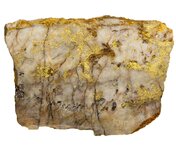I'm just a reader here and enjoy all the discussion about the LDM, which has been an interest since I was a kid. Recently a couple of the clues that Waltz supposedly gave have prompted questions, not sure if they have merit but ....
The comment that someone could "drive an Army pack train over my mine and never see it", and the comment "from my mine I can see the military trail, but from the military trail you can't see my mine."
These are two distinct references to the "military" in conjunction with talking about his mine. What about the possibility that Waltz's mine was "on (read that as "under") the military trail he referenced? If it was/is, then Army pack trains may well have passed over it and thus prompted his remark. This could be a mine entrance that goes down from a location actually in the trail and that he covered over with timbers and so forth and camouflaged -- the timbers may be strong enough to support the weight of mules walking over, especially if the opening is not too large. Or, on the other hand, the mine itself might run under the military trail, but the opening to it be off to one side or the other of the trail. If the mine or the opening sat at a high spot along the trail, then it could be possible for him to see portions of the trail from the mine, but the opening of the mine not be visible from the trail itself.
How certain is it that Waltz did make these two comments? Is it more certain he made these, than other comments he made about the mine's location? Just makes me wonder why he had the military on his mind at least twice when commenting about the location of the mine.
.
The comment that someone could "drive an Army pack train over my mine and never see it", and the comment "from my mine I can see the military trail, but from the military trail you can't see my mine."
These are two distinct references to the "military" in conjunction with talking about his mine. What about the possibility that Waltz's mine was "on (read that as "under") the military trail he referenced? If it was/is, then Army pack trains may well have passed over it and thus prompted his remark. This could be a mine entrance that goes down from a location actually in the trail and that he covered over with timbers and so forth and camouflaged -- the timbers may be strong enough to support the weight of mules walking over, especially if the opening is not too large. Or, on the other hand, the mine itself might run under the military trail, but the opening to it be off to one side or the other of the trail. If the mine or the opening sat at a high spot along the trail, then it could be possible for him to see portions of the trail from the mine, but the opening of the mine not be visible from the trail itself.
How certain is it that Waltz did make these two comments? Is it more certain he made these, than other comments he made about the mine's location? Just makes me wonder why he had the military on his mind at least twice when commenting about the location of the mine.
.



















